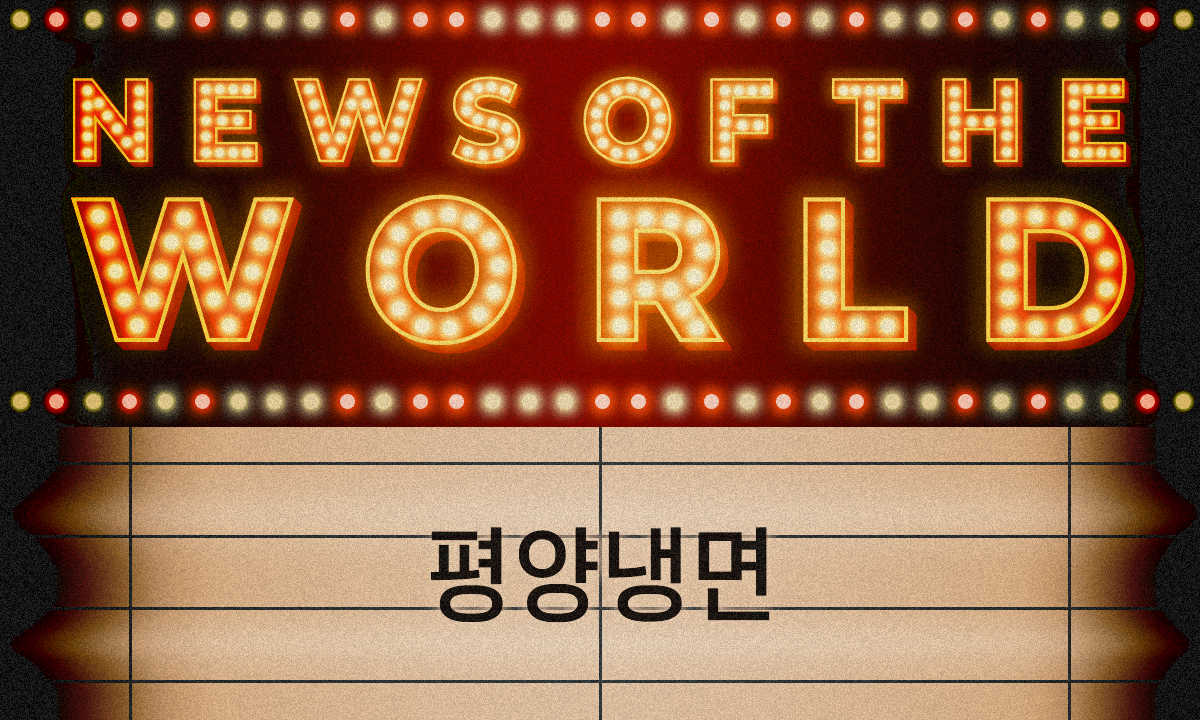
I’m on a YouTube program hosted by one of the broadcasting networks with my foreign friends who live in Korea. It’s a talk show where we eat different foods (and there’s slapstick comedy as well, of course). Each show revolves around a different kind of food, and one time on the show I ate chueo-tang with my friends. They ate every last bit in the bowl. Chueo-tang, or loach soup, isn’t a popular choice. It’s not the sort of dish that even Koreans will devour like that. They joked among themselves, saying, “We’ve been updated with the Korean tastes patch.” They like spicy food and street food, too. When we go out to a restaurant together, they always ask, “More kimchi, please!”.
But there’s one food that they weren’t able to get on board with, and that’s Pyongyang naengmyeon. This dish always stirs up controversy, even in Korea. So much so that reactions like, “I don’t understand what I’m meant to taste,” or, “It’s bland,” or, “The adults lied to us when they said it tastes good—I’ll never eat it again,” are all common. Pyongyang naengmyeon is a dish of buckwheat noodles in very cold broth. That’s topped with egg and some mild kimchi, and that’s it. Some say it’s the final step in downloading your Korean tastes patch. Most cold foods in the world are desserts, like ice cream or sherbet. Spain has gazpacho, a cold soup, but it’s not eaten with ice floating around in it the way naengmyeon is, and moreover, unlike naengmyeon, gazpacho isn’t eaten as an everyday food year-round without consideration for the season. There are two typical types of naengmyeon. There’s Pyongyang naengmyeon, served in a cold, clear broth whose flavor is not strong, and Hamhung naengmyeon, which has chewy noodles made from sweet potato starch and is seasoned with sweet and sour gochugaru-based sauce. People who have grown somewhat accustomed to Korean food enjoy Hamhung naengmyeon as well. That is to say, those people who’ve worked themselves up for something incredibly spicy. But it’s Pyongyang naengmyeon that’s truly confusing. The noodles aren’t chewy and come apart easily. They say its key flavor is indistinct. It’s just non-chewy buckwheat noodles in cold, unsweetened meat broth. Maybe that’s why Pyongyang naengmyeon often comes up when foreigners who visit Korea are asked about which Korean food is most challenging for them to grasp.
But surprisingly, more and more foreigners are coming to love Pyongyang naengmyeon. I find it mysterious. All these foreigners like Pyongyang naengmyeon when many Koreans themselves don’t! The history behind Pyongyang naengmyeon’s unique taste is somewhat difficult for Korea as well, in fact. Pyongyang is practically a symbol of the separation of the two Koreas. Around 70 years ago, when Korea was split in two, many residents of Pyongyang, the capital of North Korea, came south, mainly due to political differences or to avoid persecution. As they made and sold the food from their hometown, Pyongyang naengmyeon took root in the south of the Korean Peninsula, and indeed around the entirety of South Korea. Immigrants around the world frequently make a living by running restaurants that sell food from their homes. Pho was originally spread to southern Vietnam by migrants from the north. Naengmyeon, because it was especially popular in summer, flourished. Now when you go to the grocery store, instant Pyongyang naengmyeon is on display, and Asian and Korean food markets around the world sell them, too. Pyongyang naengmyeon reflects a characteristic of Korean food: It’s often extremely hot or cold. Burbling, boiling earthen ttukbaegi pots are served on the table, bubbling with such zeal that you could even boil a whole chicken thoroughly if you put one in. Slushed ice is added to bowls of cold noodles. Meat is cooked hot on barbecue grills built into the table, and Pyongyang naengmyeon is served ice cold, soon after, for dessert. Koreans like to experience extremes in their mouths. I’d even go as far as to say that Pyongyang naengmyeon is, in a sense, a dish that symbolizes an Eastern way of thinking. The loaded but colorless broth is reminiscent of the white space in East Asian artwork that’s intentionally left blank. Generally speaking, the chewier a noodle dish is, the more people love it; for Pyongyang naengmyeon, it’s the opposite. It falls apart as soon as you bite into it. Detecting the taste in its blandness is sometimes described as an exercise in philosophical endurance. That’s too hard, you say? Sorry. I’d like to take you to a Pyongyang naengmyeon place right this instant. That doesn’t mean you have to force a show of endurance as you think of all that philosophy and white space, of course. If the food is good, you can feel it in your mouth. So, if you were to ask me now, “What is naengmyeon?” I’d answer like this:
“It’s air conditioning for your mouth. If it’s too cold, go into the next room and come back in again!”
-
 © Park Chanil
© Park Chanil
TRIVIA
Ipgasim naengmyeon
Korea is the samgyeopsal kingdom, but it used to be bulgogi country. Naengmyeon easily stands on its own, but it’s often served as a dessert for bulgogi and galbi, too. Bulgogi and galbi restaurants are still popular in Korea, but the meals are finished off with a bowl of naengmyeon. In Korean, naengmyeon eaten this way is called “ipgasim,” meaning palate cleanser. When eaten this way, naengmyeon is half price or, surprisingly, even free.
Unauthorized reproduction and distribution prohibited.
- [NoW] Modern Korean Cuisine2021.05.14

- [NoW] Korean Barbeque2021.06.11

- [NoW] Fusion food in Korea2021.07.09
